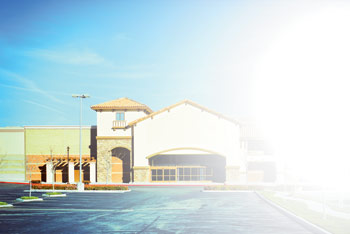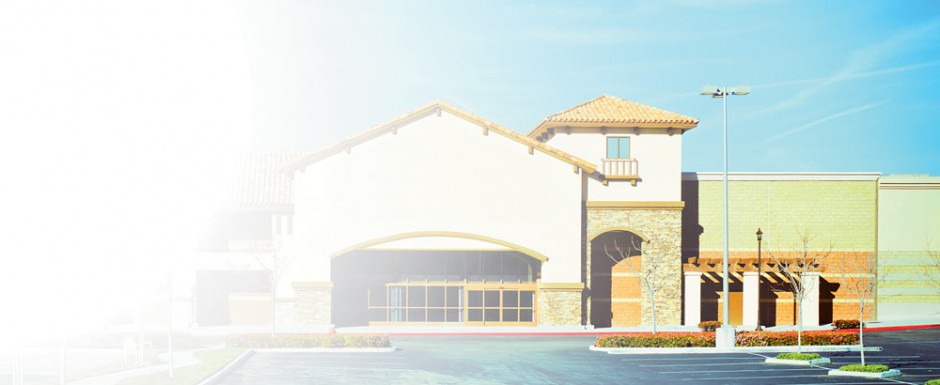 Earth has survived the dinosaur age, the Bronze Age, the Iron Age, the Industrial Age, the Space Age and is currently weathering the Information Age. Over the millennia there have been many other ages, including ice ages, the Golden Age and the Gilded Age. We’ve lived through the corner store age, the catalog age, the mall age, the strip mall age, the big box age, and we are in the salad days of the online age. The latter could also be dubbed the Amazon Age.
Earth has survived the dinosaur age, the Bronze Age, the Iron Age, the Industrial Age, the Space Age and is currently weathering the Information Age. Over the millennia there have been many other ages, including ice ages, the Golden Age and the Gilded Age. We’ve lived through the corner store age, the catalog age, the mall age, the strip mall age, the big box age, and we are in the salad days of the online age. The latter could also be dubbed the Amazon Age.
The meteoric year-on-year growth of online retail sales mirrors its adolescence status. Like a voracious teenager, online dealers are gobbling up market share from brick-and-mortar retailers. Amazon’s first quarter sales, for example, spiked 23 percent to $19.74 billion. CEO Jeff Bezos described it as a “kinetic start,” and the behemoth is now testing its own delivery service in order to gain more control over its shipments—and grab even more market share. Its latest target is grocery stores with the launch of Prime Pantry, where Amazon’s Prime members can order as much food and household essentials as can fit in a 45-pound box for a flat $5.99 delivery fee. Amazon has also recently partnered with Twitter and will let users shop directly from posts made on the social network site. The belief is that Twitter members will be engaged longer with the addition of e-commerce.
Seeing similar potential, Google recently launched Google Shopping Express, a same-day delivery service (“See it, click it, get it today.”) in Manhattan. The response was so great the first day that it overwhelmed the system. To whet the appetite of stay-at-home shoppers, Google is offering free delivery for the first six months and $10 off first orders.
Soap.com is another household sundries-based online retailer that is blanketing New York subway cars of late with its offer of free overnight shipping on orders of $49 or more. Its hashtag: #saynotodrugstores. It begs the question: Does anyone want to leave their home anymore to shop? Granted, shopping for toilet paper, laundry detergent, toothpaste and such is no thrill, but the overall trend is the growing appeal of shopping without having to ever step foot inside an actual store. Delivery trucks are already jamming many streets and, if the reports are true, drones may one day clog the skies. It’s like an agoraphobia epidemic is sweeping the nation.
The key question is whether consumers increasingly feel this way when it comes to shoe shopping? The growth in online shoe sales proves more and more consumers are buying outside brick-and-mortar stores. The 24-7 convenience factor, attractive pricing and, perhaps most of all, breadth of selection that no store could ever dream of replicating, are factors. A numbing sameness of selection found in many stores coupled with deteriorating levels of service is also pushing consumers to shop virtually. Traditional retailers simply aren’t closing enough sales, observes Keith Gossett, president of Easy Street Shoe Company and the subject of this month’s Q&A (p.12). Based on his frequent retail reconnaissance missions, Gossett says there’s still plenty of traffic (thus opportunity) but not enough shoppers leaving with bags on their arms. In his estimation, these people are just “wandering.” Gossett, who has made a career working in this industry in retail and wholesale, warns that unless traditional retailers figure out a way to differentiate themselves, shoppers will continue to shift to buying online.
While we’re not at the tipping point just yet, shoe shopping as we’ve known it might well be facing its biggest test to date. Unlike apparel—which is easier to ship and stock in a physical retail setting—shoes fit the online paradigm well. Just ask Zappos (and PlanetShoes, ShoeBuy, ShoeDazzle, JustFab, ShoeMint, etc.) how it’s been working out so far. As Gossett astutely observes, Easy Street’s substantial growth over the past decade in online sales is inversely proportional to the decline of brick-and-mortar retailers, primarily independents.
Might this truly be the beginning of the end of the Shoe Store Age? Blockbuster, for comparison’s sake, is no more because the streaming competitors offered unparalleled selection, immediacy and convenience. Plus, it was never fun running to the local video store where, invariably, the movie you wanted to rent was out or not carried, and the irritable teens “working” there made the experience far from a joy. If that’s the case at your store then, as an old saying from the Space Age goes, “Houston, we have a problem.”




